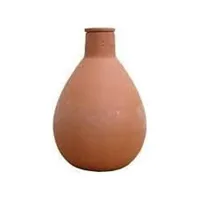This ancient self-watering trick is the secret to keeping plants watered and reducing water wastage
Discover the benefits that tried-and tested garden ollas can bring to your backyard watering regime

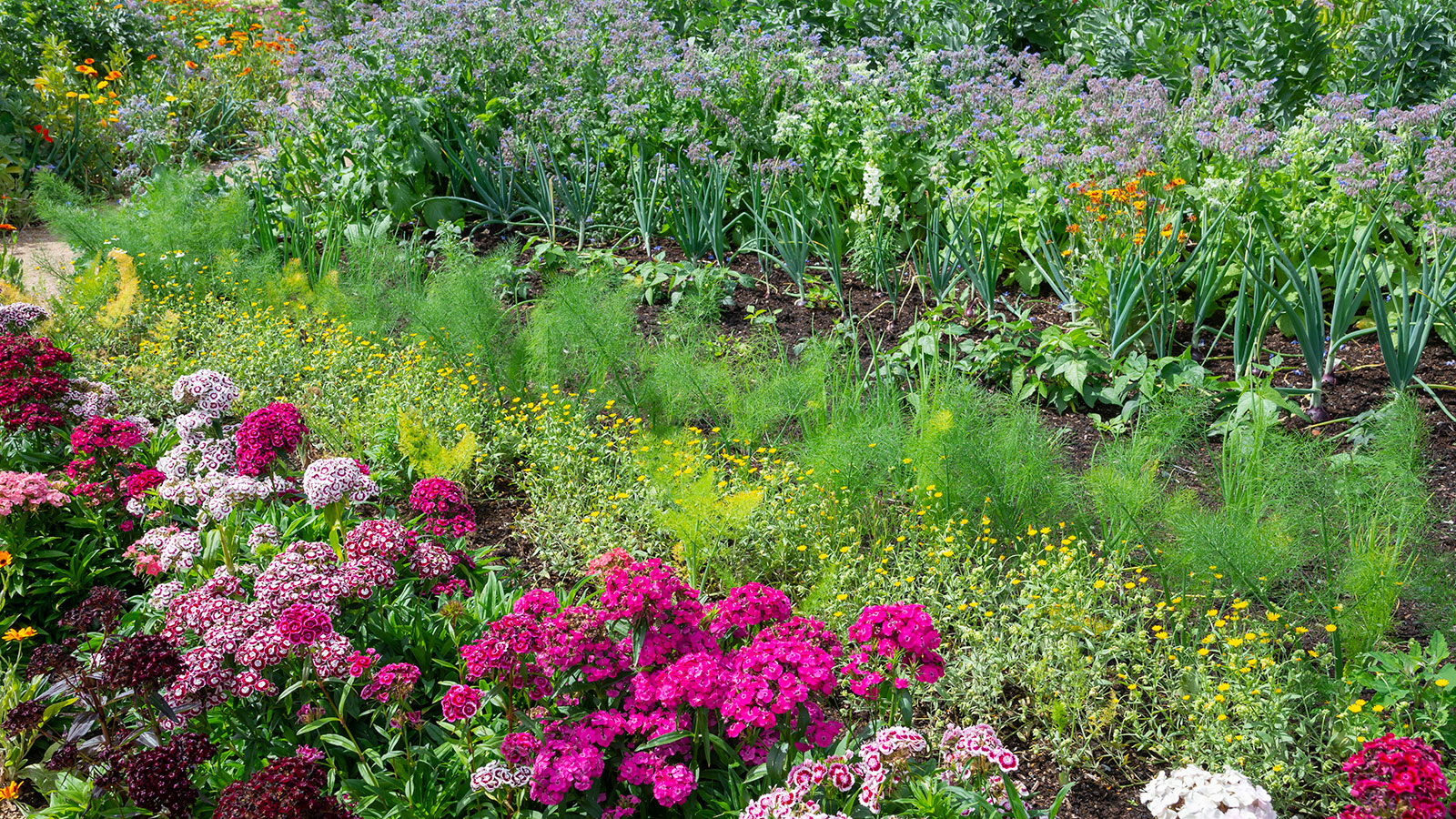
Garden ollas have been used for thousands of years as an efficient way to water plants. They are capable of watering plants for days and even today can be used to take some of the challenge out of watering.
Ollas are unglazed terracotta pots that are buried and slowly seep water into the soil right into the root zone where your plants want it. Judging when to water plants can be difficult, especially for novice gardeners, but this tried-and-trusted method of irrigation is capable of ensuring your plants are watered for several days without you having to worry.
It is a simple method that I have seen in use in kitchen gardens. I have also tried similar watering techniques when I was a professional gardener and at home in my own vegetable garden. You can even make your own olla at home with only a few pieces of kit, so it's easy to give this ancient watering technique a go.
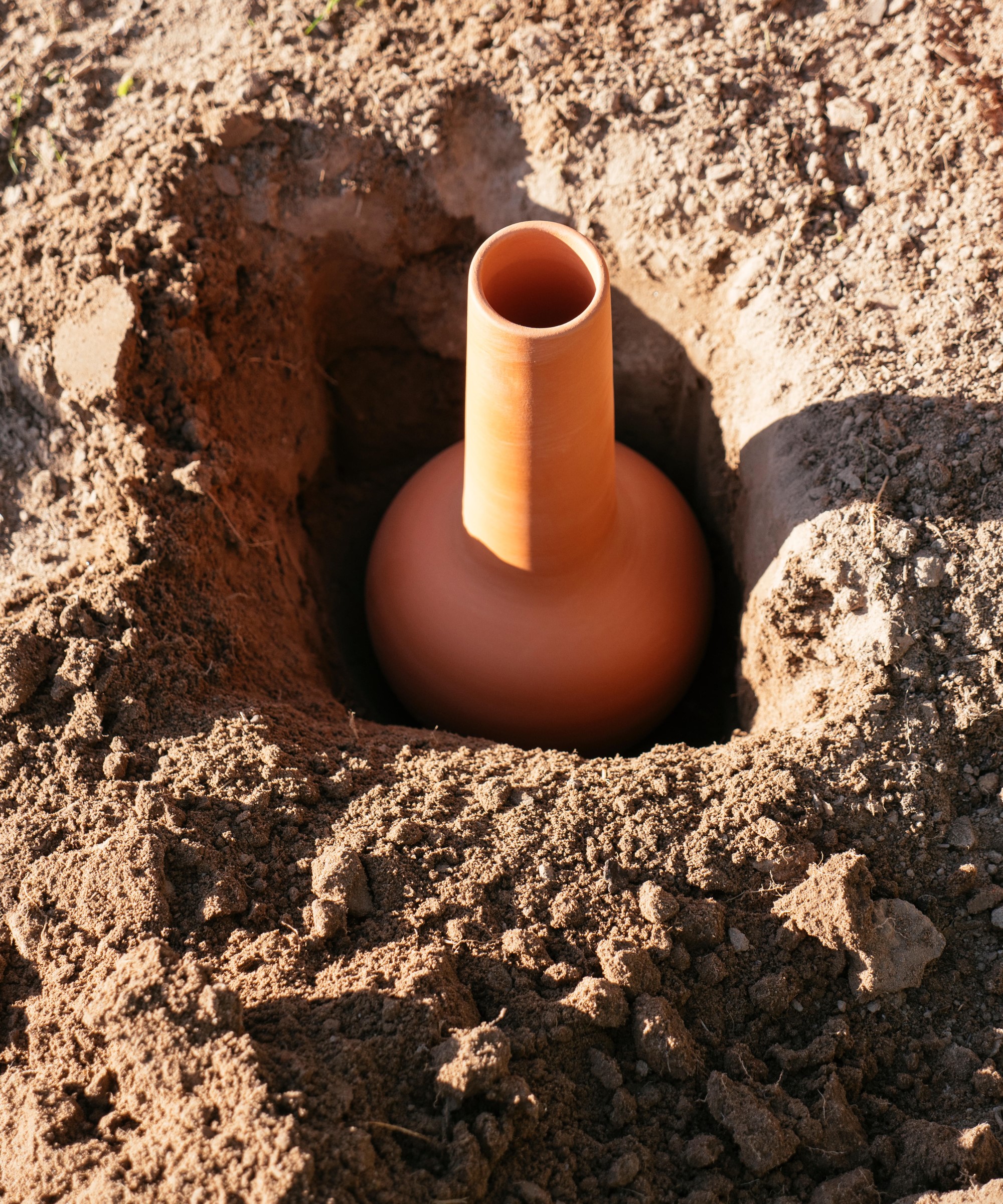
Terracotta ollas are buried with only the neck showing above the soil
What is a garden olla?
Terracotta ollas tend to have narrow necks and wider bulbous bottoms and they are buried in the soil to essentially act as self-watering pots. The key to their success is the fact that they are unglazed, the material is porous and both water and air can go through the pot. The water seeps out of the clay pot slowly over an extended period of time to be taken in by the roots of nearby plants.
The benefits of this can be felt when it comes to watering, especially watering plants in hot weather. It is a very efficient way to water as the water is slowly released and targeted at the root zone where plants need it most. In a similar way as when you water plants from the bottom, it ensures the water gets to the most vital area.
Watering plants from above can lead to lots of the water being lost via evaporation, a very recurrent garden watering mistake that people make, but not by utilizing an olla. This system gets all of the water where it is needed most and encourages plants to develop stronger and healthier root systems.
It also reduces how often you need to be out there watering plants and is a great option to water plants while away on vacation.
Design expertise in your inbox – from inspiring decorating ideas and beautiful celebrity homes to practical gardening advice and shopping round-ups.
Village Decor Terracotta Water Dripper | $65 at Amazon
A terracotta olla waterer complete with lid and a 1600ml reservoir to hold water that can provide a steady level of moisture for up to five days.
How does a terracotta olla work?
A garden olla works using a process of soil moisture tension, a measurement of the force needed for roots to get water from the soil. So when the soil is dry, the water is drawn out through the porous wall of the olla and available for the plant’s roots to take up. When the soil is adequately moist, the water remains in the vessel. Essentially the water only comes out as required by the plant’s around it, making it a very efficient watering method.
It is thought that plants up to 1 foot away from an olla can benefit from the water seeping out, however this can depend on the soil type. The soil type, together with rainfall, and the size of the vessel, will also impact how often you need to fill the ollas up. It should tend to be once or twice a week.
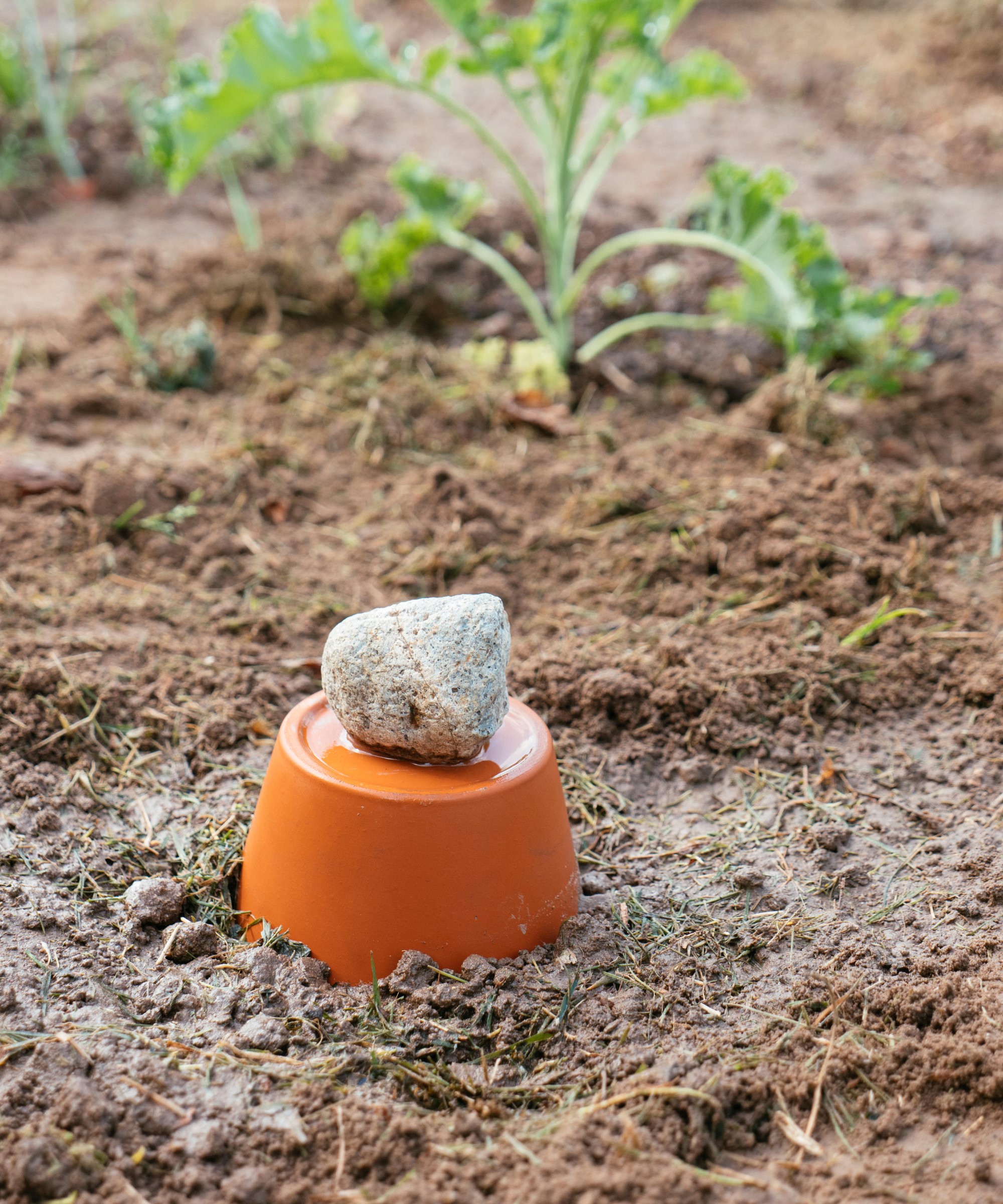
The porous terracotta seeps water into surrounding soil
How to make your own garden olla
You can purchase ollas online in various sizes, but it is also relatively simple to make a homemade version.
To do this you need an unglazed terracotta plant pot, a saucer, and something to cover the drainage hole in the pot. Options include a flat piece of clay or stone, a cork, silicone or mounting putty, just to make sure no water cannot get through.
Simply bury the pot in your flower bed with the hole blocked, fill with water and place the lid on top. The lid keeps dirt out and also any small animals who may be interested. Lift the lid to check the water level every few days and refill as required.
An alternative is to take two terracotta pots, block the hole of one, and glue the rims of each of them together to sink as one vessel. Fill the vessel through the top hole and then cover it with a stone.
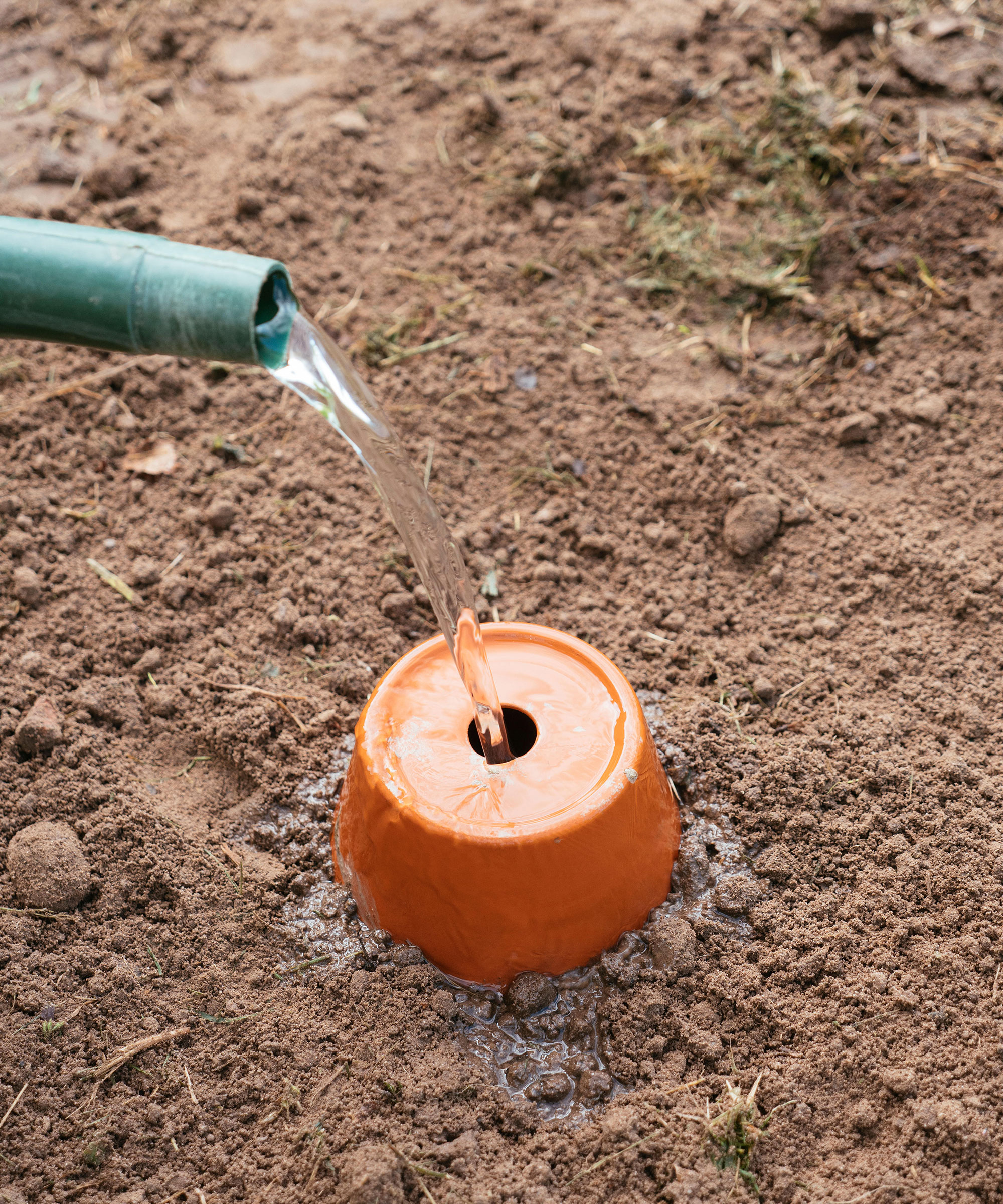
You can fill a homemade olla through the hole in the top of the two terracotta pots
What plants are best for a garden olla?
Garden ollas have been used for irrigation for centuries to help to grow crops and still to this day they are great for use in the vegetable garden.
They are perfect for crops that put out large and fibrous root systems. The pots are ideal to use when growing tomatoes, chillies, squash, pumpkins or zucchini. All of these crops like constant moisture around their roots and are hungry plants.
Olla pots are also practical to use when planting a tree to keep the young tree alive, but should be removed after the first year. They can also be used in flower beds and borders, however care needs to be taken as the roots of woody shrubs once established are capable of breaking through the terracotta in search of water.
An olla can be used for watering plants in containers as well as those in the yard. An individual olla is more than suitable to be utilized in larger pots and planters to keep plants well watered.
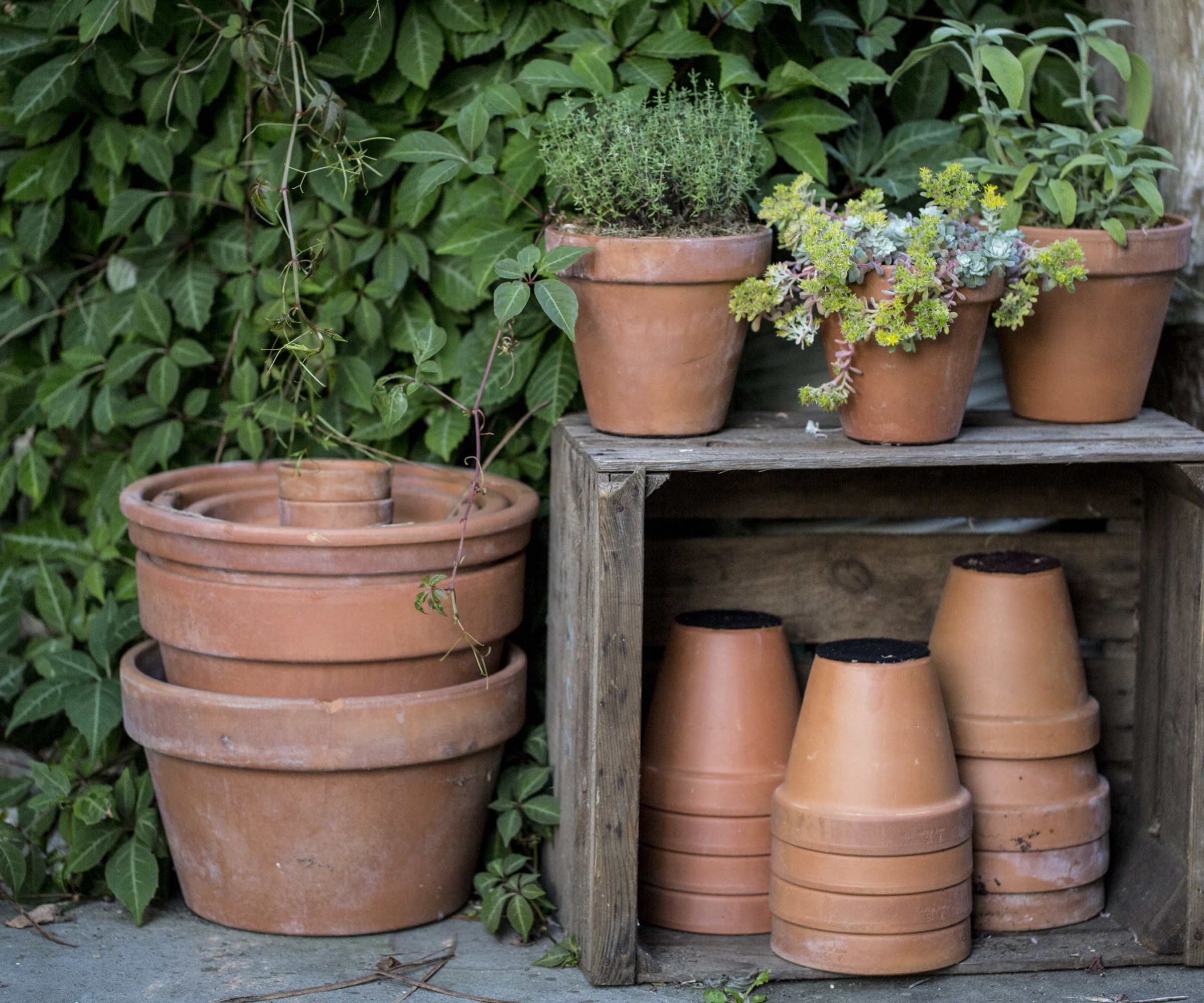
Terracotta pots can be turned into homemade ollas
We can all learn something from looking to the past. Gardeners then survived without automatic irrigation systems, so why not utilize that knowledge and put it to use in our current gardens?
Some of the simplest techniques can be very effective, and ollas are highly effective. I would be surprised not to see this watering technique gain more popularity again as our summers continue to get hotter and gardeners look for tried-and-trusted ways to help keep plants hydrated.

Drew has worked as a writer since 2008 and was also a professional gardener for many years. As a trained horticulturist, he worked in prestigious historic gardens, including Hanbury Hall and the world-famous Hidcote Manor Garden. He also spent time as a specialist kitchen gardener at Soho Farmhouse and Netherby Hall, where he grew vegetables, fruit, herbs, and cut flowers for restaurants. Drew has written for numerous print and online publications and is an allotment holder and garden blogger. He is shortlisted for the Digital Gardening Writer of the Year at the 2025 Garden Media Guild Awards.
